Traces of the Roman influence in Sardinia can still be seen today in numerous sites scattered throughout the island and can be discovered on a fascinating journey into the past.
Sardinia has been ruled by different peoples in the past. The Phoenicians, who ruled from the 9th century BC, were replaced in 550 BC by the Punic tribes from North Africa. After the 1st Punic War, from which Carthage emerged weakened, the Romans, who had long had their eye on Sardinia for its strategic position, finally succeeded in officially ruling it from 238 BC. Together with Corsica, Sardinia was part of the Roman Empire as the province of Sardinia et Corsica for centuries until around 450 AD, whose influence contributed to the development of agriculture, mining and trade.
We have now selected the most beautiful Roman sites in Sardinia and recommend a visit, especially in the spring and autumn months, perhaps on a self-drive tour of Sardinia or simply if you are on holiday nearby.
Our journey begins in the south in the island’s capital, Cagliari, and continues through Nora and along the west coast to Porto Torres high in the north.
Cagliari: the amphitheatre and other attractions
Start your journey in Cagliari with ist many archeological sites, where you will find one of the largest and most impressive testimonies of the Roman era: the Roman amphitheatre. Built in the 2nd century A.D. and dug into the limestone rock of the Buoncammino hill, the theatre was used for public entertainment and could hold up to 10,000 spectators. Bloody spectacles were staged here, such as the ludi gladiatorii (gladiator fights) and the venationes (fights with exotic animals). Although the ravages of time have destroyed part of the structure, the charm of the place has remained unchanged.
In the old town, in the Marina neighbourhood, you can also see the remains of a Roman road in an underground exhibition near the church of Sant’Eulalia.
Another important Roman site in Cagliari is the necropolis of Tuvixeddu, one of the largest and oldest necropolises in the Mediterranean. There are more than 1,000 tombs, many of which are of Punic origin and were later reused by the Romans. The chamber tombs and tombs carved into the rock, decorated with inscriptions and frescoes, offer a fascinating insight into the spirituality and burial customs of past eras.
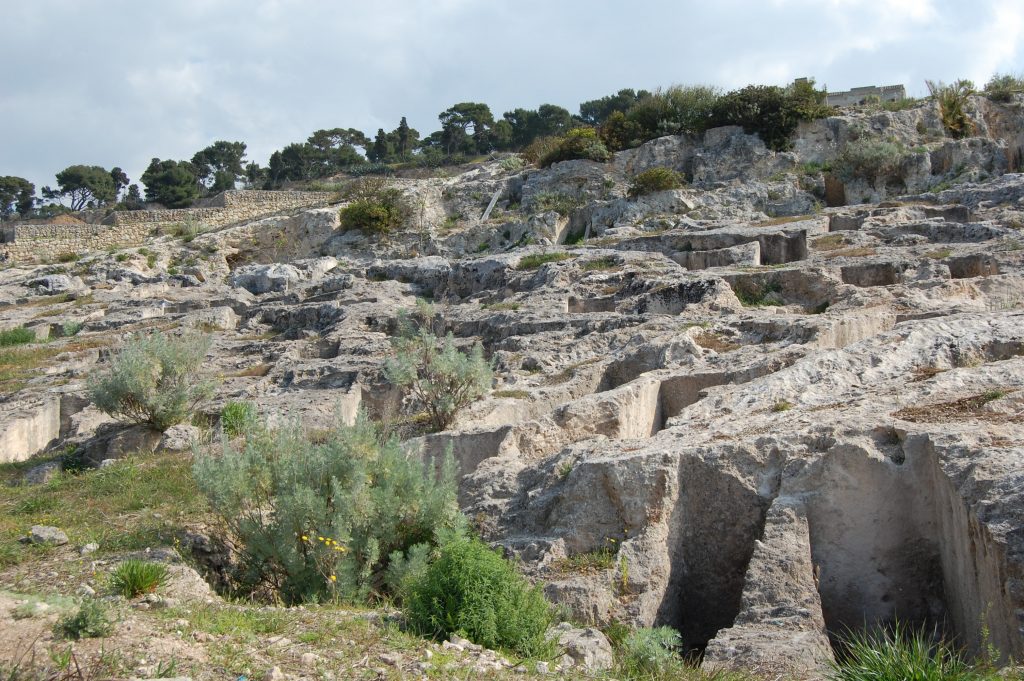
Nora, Sardinia’s first Roman colony
About 40km from Cagliari is the popular holiday destination of Pula, which boasts not only fantastic sandy beaches but also the ancient city of Nora. Nora is the first city in Sardinia to have been founded by the Phoenicians. Under Roman rule, Nora became a thriving colony and, thanks to its strategic location on the sea, an important trading port.
Walking through the remains of this ancient city, you can admire the Roman theatre, where not only performances but probably also political meetings were held, as well as the Roman baths and private dwellings such as the insulae and domus, which bear witness to the social and family organisation of the time. While exploring the site, you can admire the view of the Gulf of the Angels, a perfect combination of history and natural beauty.
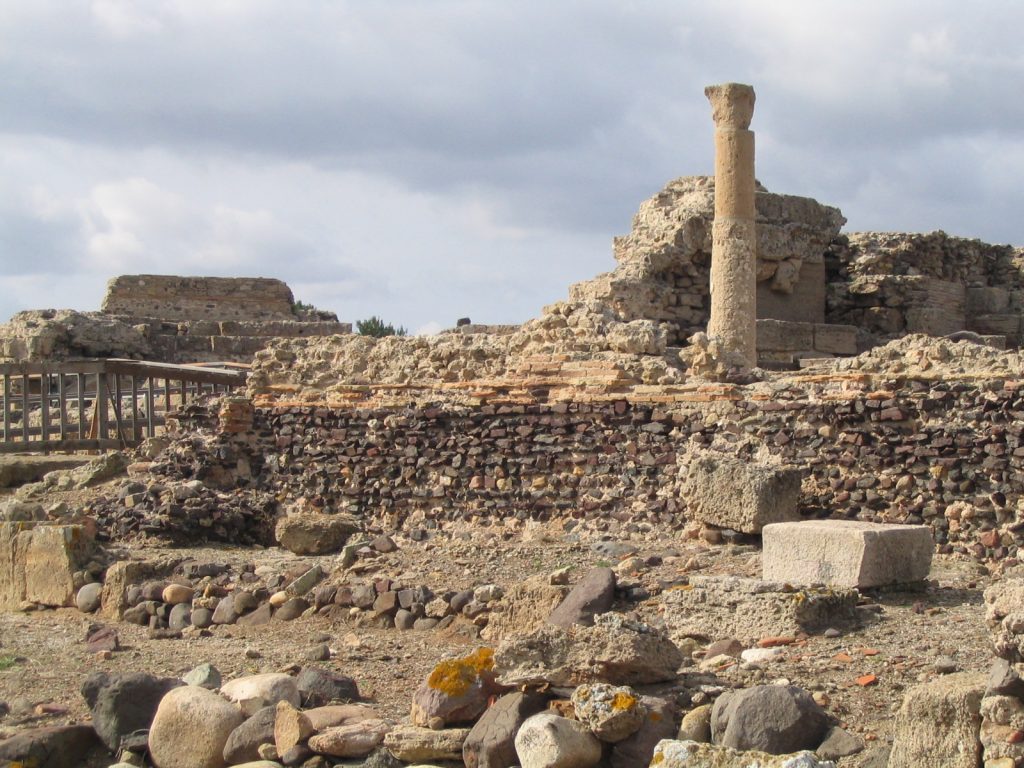
Tharros, the ancient Phoenician-Roman town
From Pula, the journey continues north along the west coast: Tharros, another jewel of Roman history, is located on the promontory of the Sinis peninsula near Oristano. Founded by the Phoenicians in the 7th century BC, after the Roman conquest it became one of the most important commercial and administrative centres in the province.
Walking through the ruins you can admire the Roman forum, surrounded by columns and temples that tell of gods and rituals, the private residences, many of which still have exquisite mosaic floors, and the system of cisterns and aqueducts that testify to the advanced technology of the time. The semicolumned temple in the upper part of the town offers a panoramic view of the sea and the coast of San Giovanni di Sinis.
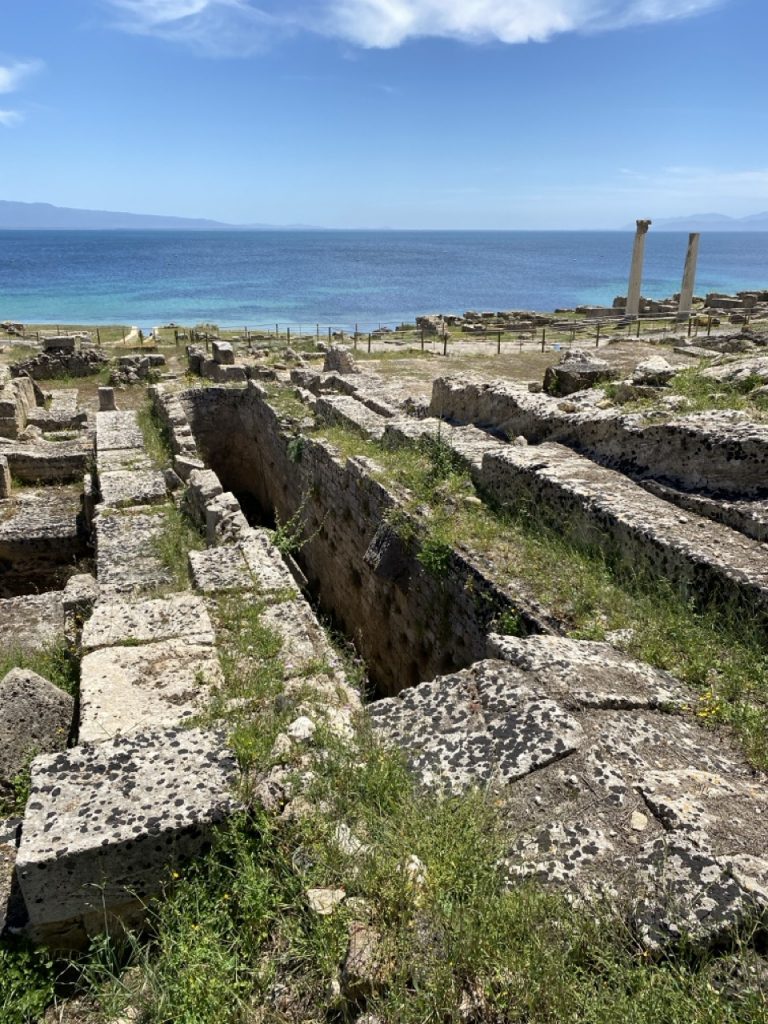
Fordongianus, the imperial baths
A short trip inland from Tharros leads to Fordongianus, about 40 kilometres away, on the banks of the river Tirso. Known in Roman times as Forum Traiani, it was once an important trading centre and refreshment stop for travellers, and has been famous for its thermal baths since Roman times.
Today you can still see the remains of the ancient baths, which were fed by natural springs with water heated to over 50°C, as well as the majestic structures such as columns and mosaics that decorated the thermal rooms. The baths were divided into different areas for relaxation and well-being: the calidarium (hot bath), the tepidarium (lukewarm bath) and the frigidarium (cold bath). Here you can immerse yourself in the history of Roman wellness and discover how these facilities were an integral part of social life at the time.
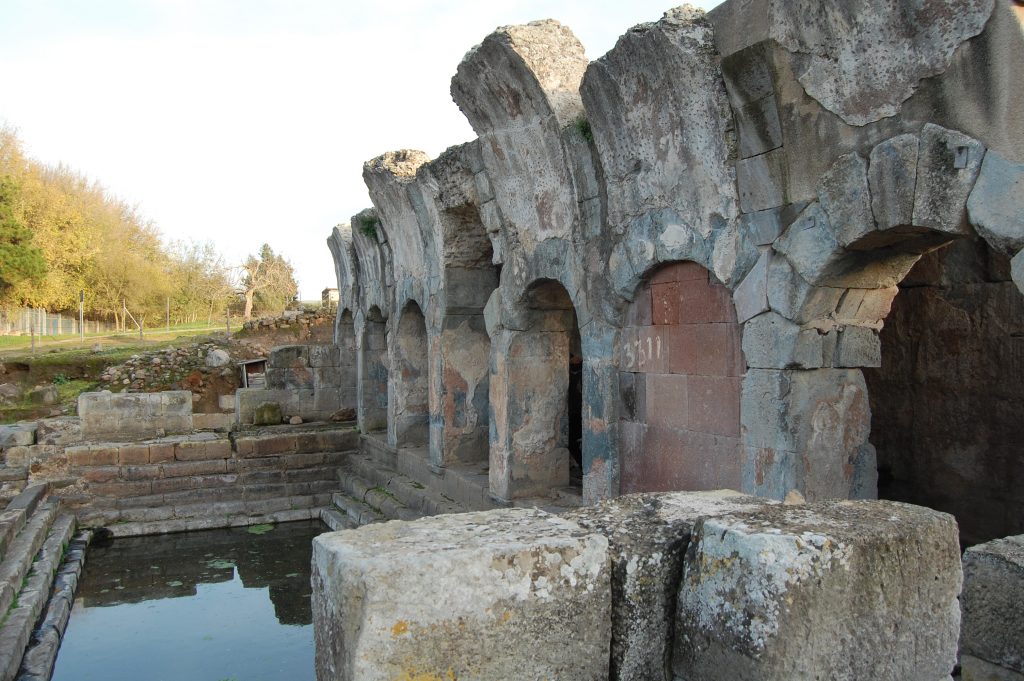
Porto Torres and the great Roman city of Turris Libisonis
Finally, we head north to Porto Torres, which was once called Turris Libisonis and established itself as one of the most important Roman cities in Sardinia. Thanks to its port, it was an important commercial centre that linked the island to the rest of the empire, especially Rome.
The archaeological site of Turris Libisonis preserves several Roman villas with extraordinarily artistic mosaic floors depicting scenes from daily life and geometric motifs. In particular, the Villa of Orpheus is a masterpiece of mosaic art, with floors decorated with mythological scenes.
In Porto Torres you can also visit the remains of a large amphitheatre and the Forum, which was the political and administrative centre of the city.
The symbol of the city’s imperial history, however, is the Roman Bridge, an imposing structure with seven arches that spans the River Mannu and is still considered one of the most important buildings of the period.
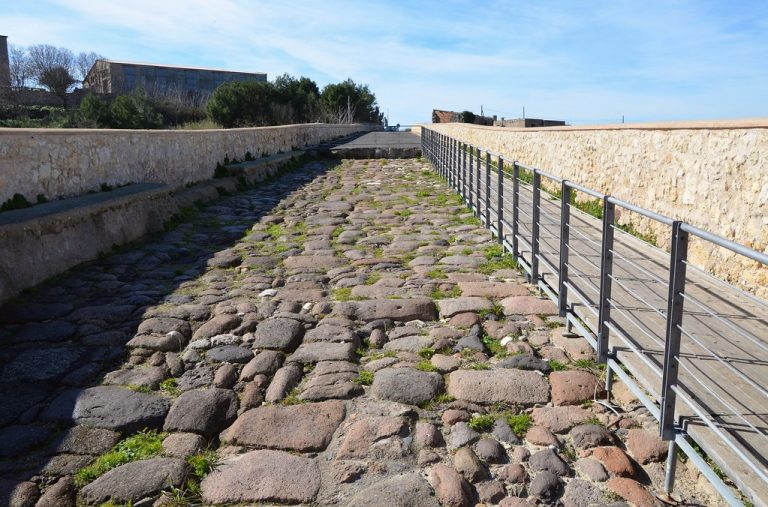
And if history and archaeology are your passion, get in touch with us! We will be happy to organise a tailor-made trip to Sardinia that includes these and other stops.
 it
it de
de nl
nl en
en fr
fr











